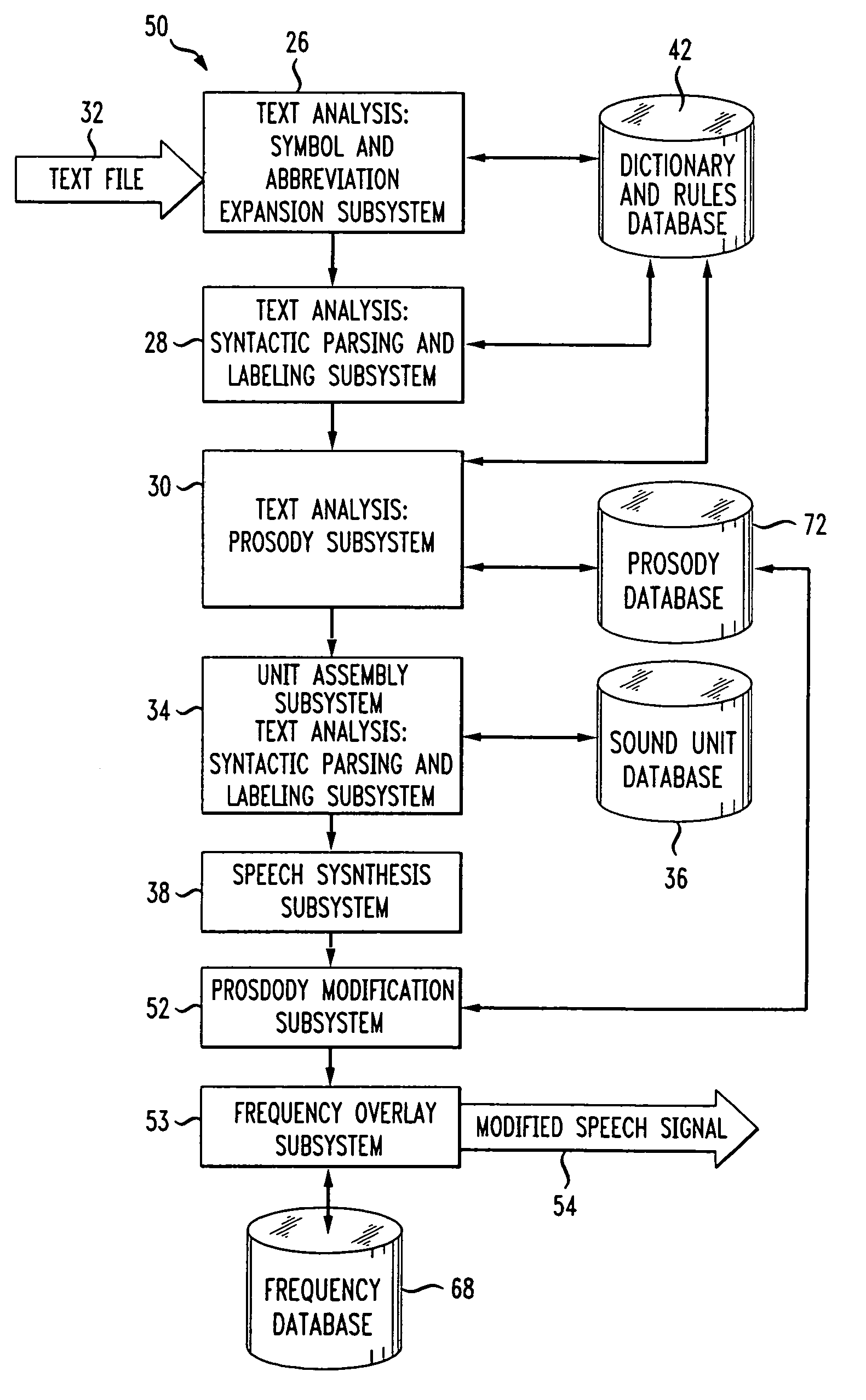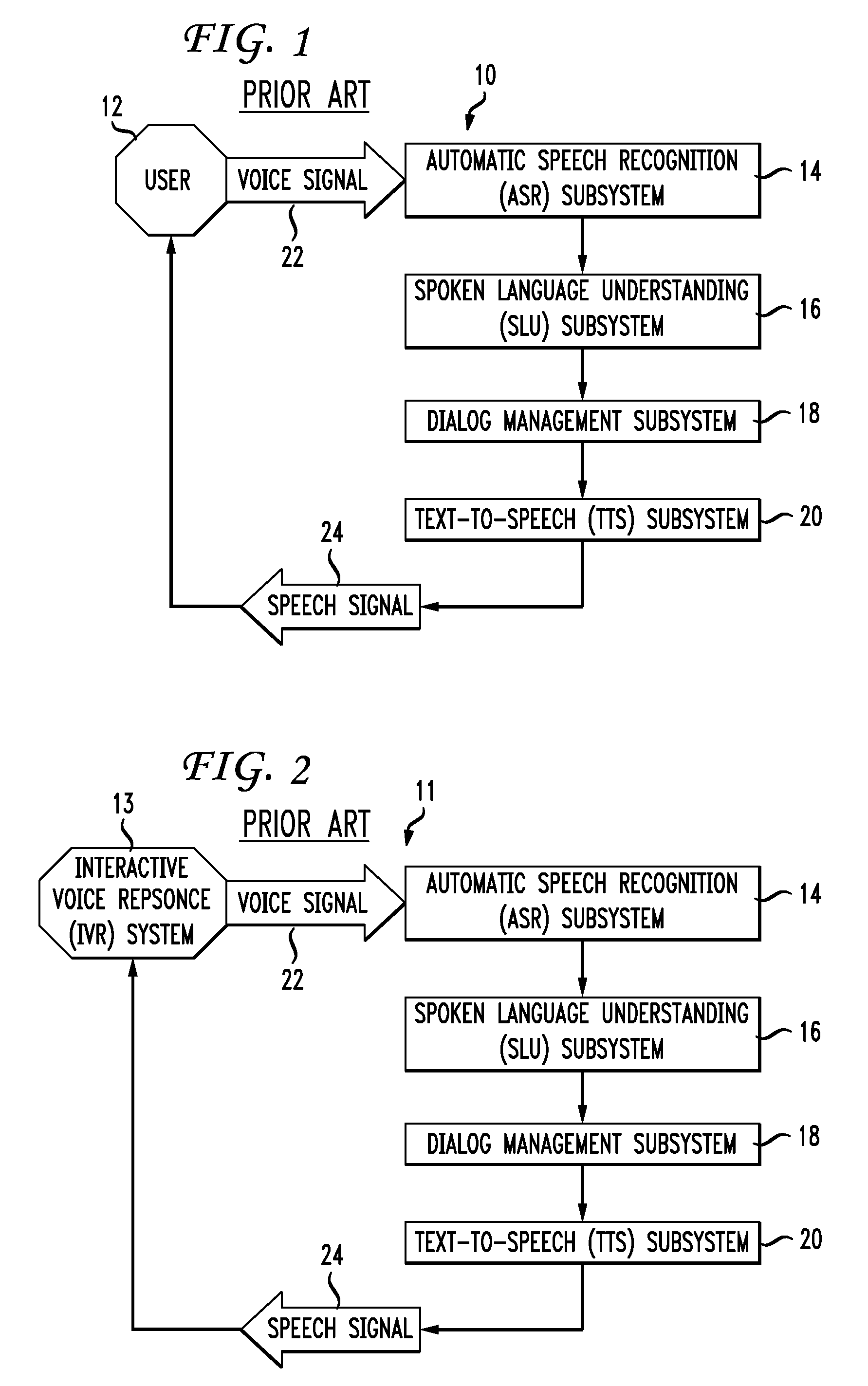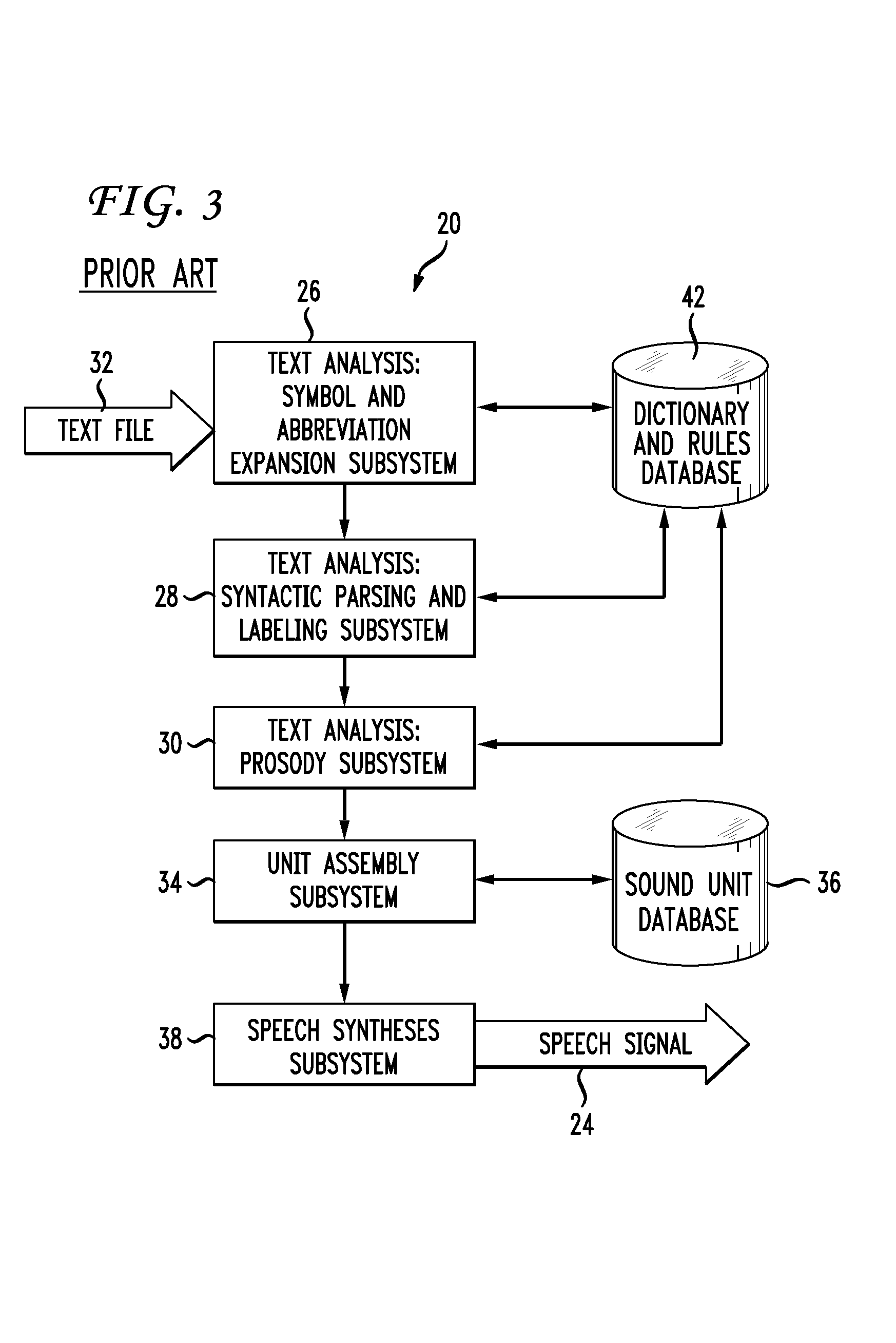Method and system of generating a speech signal with overlayed random frequency signal
a random frequency signal and speech signal technology, applied in the field of texttospeech (tts) synthesis systems, can solve the problems of unnatural and monotonous synthesized speech, high cost, and limited flexibility of the approach, and achieve the effect of reducing the possibility of an ivr system
- Summary
- Abstract
- Description
- Claims
- Application Information
AI Technical Summary
Benefits of technology
Problems solved by technology
Method used
Image
Examples
Embodiment Construction
[0040]One difficulty with concatenative synthesis is the decision of exactly what type of segment to select. Long phrases reproduce the actual utterance originally spoken and are widely used in interactive voice-response (IVR) systems. Such segments are very difficult to modify or extend for even trivial changes in the text. Phoneme-sized segments can be extracted from aligned phonetic-acoustic data sequences, but simple phonemes alone cannot typically model difficult transition periods between steady-state central sections, which can also lead to unnatural sounding speech. Diphone and demi-syllable segments have been popular in TTS systems since these segments include transition regions, and can conveniently yield locally intelligible acoustic waveforms.
[0041]Another problem with concatenating phonemes or larger units is the need to modify each segment according to prosodic requirements and the intended context. A linear predictive coding (LPC) representation of the audio signal en...
PUM
 Login to View More
Login to View More Abstract
Description
Claims
Application Information
 Login to View More
Login to View More - R&D
- Intellectual Property
- Life Sciences
- Materials
- Tech Scout
- Unparalleled Data Quality
- Higher Quality Content
- 60% Fewer Hallucinations
Browse by: Latest US Patents, China's latest patents, Technical Efficacy Thesaurus, Application Domain, Technology Topic, Popular Technical Reports.
© 2025 PatSnap. All rights reserved.Legal|Privacy policy|Modern Slavery Act Transparency Statement|Sitemap|About US| Contact US: help@patsnap.com



